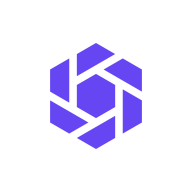

Find out what your peers are saying about SecurityScorecard, BitSight, OneTrust and others in IT Vendor Risk Management.
This resulting in a lower insurance premium cost for us and considerable cost savings overall, which made our management very pleased with the progress.
The biggest benefit is visibility, allowing organizations to understand their risks, vulnerabilities, and potential threats.
We have seen a clear return on investment, and in terms of the metrics, the time saver is in the reduction of time spent.
They need better organization to support their customer volume.
they continue to assist us with bi-monthly sync-up calls whenever we face issues with the platform regarding risk and how to improve our security score
I would rate the customer support for SecurityScorecard nine out of 10.
It needs improvement in response time and addressing feature requests promptly.
The technical support of Tenable Vulnerability Management is available 24/7, and whenever we require support, we can get it within five minutes.
I would evaluate Tenable Vulnerability Management's customer service and technical support as average.
The product is suitable for medium to large businesses, typically with a revenue range from $200 million to a couple of billion dollars.
My experience with SecurityScorecard is that it is highly scalable and can handle more vendors or users as my organization grows.
They can seamlessly scale the number of endpoints from 100 to 1,000,000 in a day.
Tenable Vulnerability Management is highly scalable.
I find SecurityScorecard stable for our organization, as I have not encountered any downtime.
I have faced no stability issues with Tenable.
The stability is commendable, and I would rate Tenable ten out of ten.
The stability of Tenable Vulnerability Management is highly reliable.
There is a need for more active rather than passive third-party risk management features to truly mitigate risks.
SecurityScorecard could enhance some of the integrations based on AI platforms, where I could receive suggestions from the AI tool regarding why SecurityScorecard rates specific issues as critical or high.
If SecurityScorecard could help their customers internally by developing their tool or feature so that customer devices that are not only public-facing can be monitored, it would be more beneficial.
They should also accelerate the process of implementing new features upon request.
I would suggest HP WebInspect as a better option than Tenable.io.
Tenable Vulnerability Management is not very effective for real-time risk prioritization for our organization's security strategy.
There are more expensive and cheaper options available.
I expected slightly lower pricing.
Pricing is acceptable as per the Indian market.
Tenable charges around $40 per device, while Rapid7 costs $10 to $15 per device.
It combines threat intel data with vulnerability information to increase risk ratings and provides insights into third-party supply chain risks.
I particularly value the Jira integration, so any issue identified as part of the threat intel activity can be directly updated through our Jira.
It converts complex security issues into business-friendly language, which helps executives and the board understand cyber risk.
Tenable enables vulnerability management through potential AI integration that consolidates efforts and resolves multiple vulnerabilities simultaneously.
The main benefit of integration with Tenable Vulnerability Management is that there will be no lack of missing vulnerabilities when it comes to the patching environment.
The best features of Tenable Vulnerability Management are flexibility, breadth and scope, and the fact that their current vulnerabilities come out, and they have tests for them within a day or two.
| Product | Market Share (%) |
|---|---|
| SecurityScorecard | 8.1% |
| OneTrust GRC | 8.3% |
| RSA Archer | 8.0% |
| Other | 75.6% |
| Product | Market Share (%) |
|---|---|
| Tenable Vulnerability Management | 3.4% |
| Wiz | 7.5% |
| Tenable Nessus | 5.2% |
| Other | 83.9% |

| Company Size | Count |
|---|---|
| Small Business | 7 |
| Midsize Enterprise | 5 |
| Large Enterprise | 2 |
| Company Size | Count |
|---|---|
| Small Business | 20 |
| Midsize Enterprise | 2 |
| Large Enterprise | 21 |
SecurityScorecard provides comprehensive cybersecurity insights with features such as notifications for score changes and configurable reporting, supporting team collaboration. It emphasizes multi-factor authentication and continuous monitoring for improved risk assessments.
SecurityScorecard specializes in assessing third-party cybersecurity risks, enhancing security posture, and analyzing exposed data. It offers automated information gathering and vendor reports, aiding in vulnerability assessments for supply chain risk management. Users value the Attack Surface Index and recommendations for security improvements, though faster technical response times and better cost-effectiveness, especially in Brazil, are desired. Enhancements such as app scanning and more efficient vulnerability management could expand its capabilities.
What are the key features of SecurityScorecard?SecurityScorecard is utilized in industries for managing third-party cybersecurity threats by providing detailed vulnerability assessments and automated reporting. Its implementation aids supply chain risk management and enhances industry-specific security strategies, with room for improvement in technical response times and dark web intelligence inclusion.
Managed in the cloud and powered by Tenable Nessus, Tenable Vulnerability Management (formerly Tenable.io) provides the industry's most comprehensive vulnerability coverage with real-time continuous assessment of your organization. Built-in prioritization, threat intelligence and real-time insight help you understand your exposures and proactively prioritize remediations.
We monitor all IT Vendor Risk Management reviews to prevent fraudulent reviews and keep review quality high. We do not post reviews by company employees or direct competitors. We validate each review for authenticity via cross-reference with LinkedIn, and personal follow-up with the reviewer when necessary.